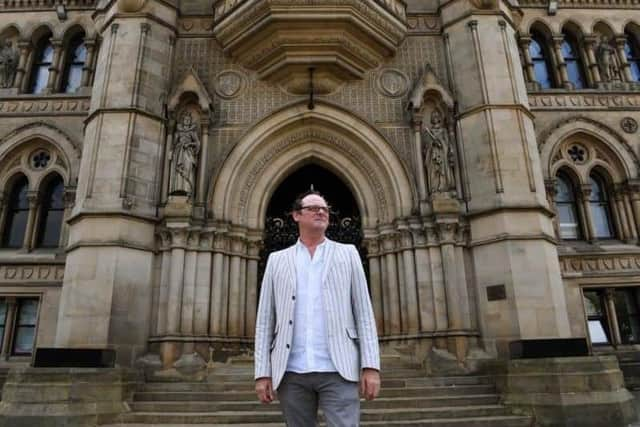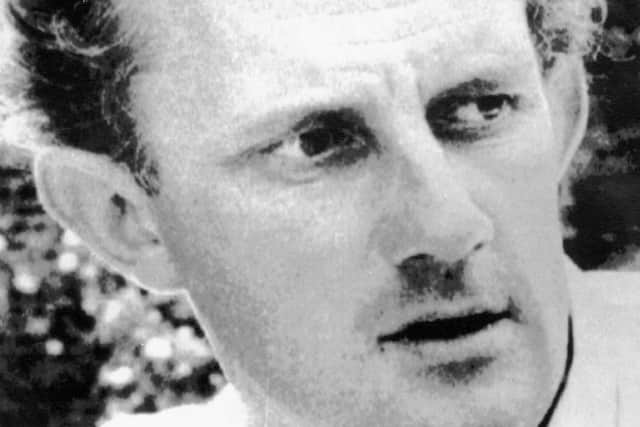Shipley house was first place outside London to receive BBC television broadcast
It is richly deserved, because Bradfor d’s contributions to the magic of sound and vision itself are considerable.
One of its district’s market towns, Shipley, has made its own special impact: the first television broadcast received outside of London from the BBC was in a house in the market town, and later, native Tony Richardson was a pioneer of the British social realism films.
Advertisement
Hide AdAdvertisement
Hide AdSuch stories will be explored during an interactive film screening of Richardson’s 1961 film, A Taste of Honey. Participants will meet at Shipley Market Square at 6.30pm on Frid ay and be led to the film screening at the Kirkgate Centre a storyteller, who will share details of the town's contributions to TV and film.


Prof Wilson, director of Bradford UNESCO City of Film and an expert advisor on the subject, says: “ I think it’s really important, actually, that we do stop sometimes and look back at what contribution has been made from the city and the residents of the city over the years.”
The research into Shipley’s connection to the big and small screens has been carried out by the team at Bradford UNESCO City of Film as part of the Being Human festival, the UK’s national festival of the humanities, which started last week and continues until Saturday.
The festival is led by the School of Advanced Study, University of London, with support from Research England, in partnership with the Arts and Humanities Research Council and the British Academy. The University of Bradford has been chosen as a ‘hub’ for the festival, with a special programme of events celebrating the 100th anniversary of the BBC.
Advertisement
Hide AdAdvertisement
Hide AdAs part of the events, Bradford City of Film has released a podcast featuring Dr Mark Goodall, a lecturer at the University of Bradford’s Department of Media, Design and Technology, and special guest Iain Logie Baird, the grandson of John Logie Baird, an inventor of the the television set.


On the podcast, Iain talks about how the Bankfield Drive home of Sydney Wright, manager of the radio department at Christopher Pratt & Sons furniture store in Bradford, was on October 8, 1929 the first location to receive a BBC television broadcast outside of London.
Scottish inventor John Logie Baird had in 1926 given the first demonstration of his working television set and three years on it was decided that the BBC would broadcast television on a regular basis, with programmes made by the Baird Company.
Iain says it’s important to note that the BBC was merely allowing the Baird Company to make use of its transmitters, and the BBC did not begin making regular TV programmes itself until August 1932, using a studio at Broadcasting House.
Advertisement
Hide AdAdvertisement
Hide AdHowever, the official launch of the first British television service took place on September 30, 1929 and the event in Bradford a week or so later was organised by Harry J Barton-Chapple, who had taught electrical engineering at Bradford Technical College between 1922 and 1925 before joining Baird’s company in 1928 as a technical advisor and publicist. Because of his time working in Bradford, Mr Barton-Chapple knew Mr Wright, and his housewas chosen to receive the broadcasts.
At the time of the Shipley reception, sound and vision could only be delivered separately (until March 1930) due to only one transmitter being available – 2LO, then located on the roof of Selfridges Oxford Street store in London - and what those in Mr Wright’s house viewed was basic: initially a portrait of Prince Edward and then, to show movement, one or more people from the studio moving their heads and making facial gestures. The pictures were interspersed with sound commentary at approximately two-minute intervals. But nearly a century on, it was a hugely significant moment in the medium of television.
Later, Shipley native Tony Richardson rose to prominence directing social realism films as A Taste of Honey in 1961, and The Loneliness of the Long Distance Runner in 1962. But it was his 18th century-set comedy Tom Jones in 1963 that won four Academy Awards - Best Picture and Best Director for Richardson, Best Adapted Screenplay and Best Original Score.
Prof Wilson, who says that makers of upcoming shows such as Netflix thriller Bodies and ITV’s Malpractice have filmed in Bradford of late, draws a comparison with the director’s techniques and creators he works with today.
Advertisement
Hide AdAdvertisement
Hide Ad“With A Taste of Honey it’s quite well documented that was one of the first times he’d filmed out on location, really, and again it’s well documented that he didn’t want to go back into a studio setting after he’d made that film because he realised the authenticity of making this sort of content on location. And of course that ties into what we’re doing with the film office,” he says.
“I think that element of social realism that you get with those kitchen sink films like A Taste of Honey, filmed predominantly in and around Manchester, is still present today.” He adds: "The sounds of people’s shoes on the floor, the stone steps - the elements that locations can bring to the storyline. When people get it, they really do get it and part of the reason why lots of people keep coming back to Bradford is because of the kind of diversity of location we have to offer.”
The ‘Shipley Sound and Vision’ podcast is on YouTube or Spotify. The free event on Friday is fully booked but check for returns by searching on www.eventbrite.co.uk.